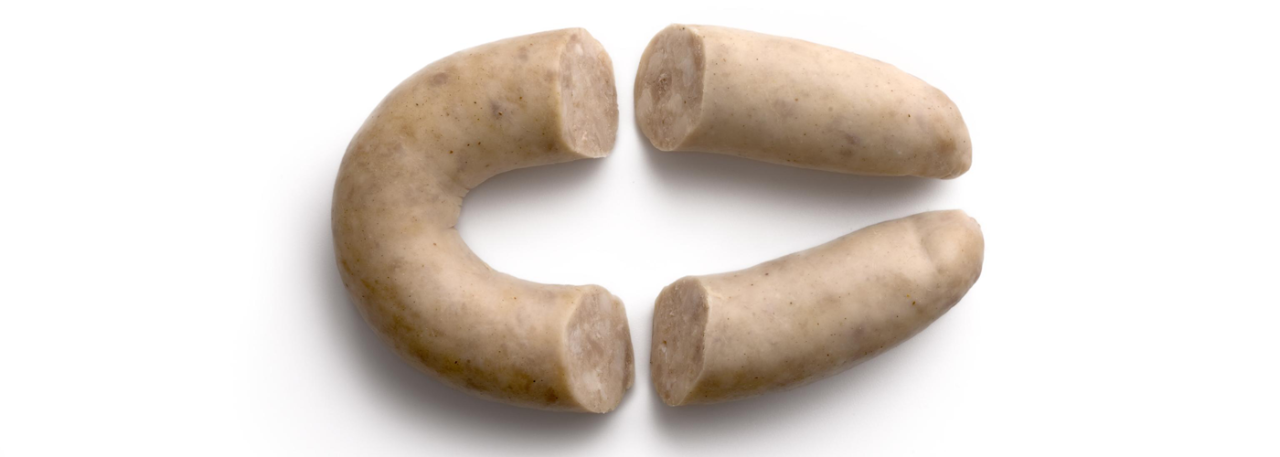.png.transform/rendition-xs/image_image%20(1).png)
Catalan butifarra sausage
Meat product (fresh or cooked), stuffed into a casing made from the large intestine of the pig, prepared using traditional methods from a mixture of finely chopped pork meat (leg, shoulder or loin and bacon fat) which is then seasoned with salt, pepper and other spices.
It may be fresh, made mainly with lean meat and perhaps a small quantity of pork fat. It can also be cooked, and consumed as it is, without the need for any additional preparation other than cutting into fine slices and served as an appetizer or an accompaniment.
Tasting notes
It has a characteristic aroma of cooked pork, with a slightly spicy, salty flavor.
Other notes
Its usual presentation is as pork meat stuffed into a natural casing to make a sausage with a diameter of between 3 and 5 cm, and either U-shaped or straight. It is thick and elongated with a bulge at one of its ends. The outside is ivory white, changing to grey as it dries. When sliced, the color is bright pink and shiny and the individual morsels of meat can be distinguished clearly.
- Raw butifarra: it is elongated and rounded in shape and stuffed into a continuous length of casing. When cut, it has a pinkish color with white dots.
- Cooked butifarra: this can be of two types:
- White: whitish with a brown tone
- Black: made with blood, without rice or onion (sometimes contains pine nuts and raisins)
Production / Processing method
This is the only traditional-style cooked sausage product which is cured by the addition of salt. It is made using lean pork meat, with all gristle and tendons removed, and in some cases with the addition of a small quantity of bacon fat.
Everything is chopped together with a knife, or thickly minced and then kneaded. It is seasoned with salt, a pinch of sugar, white pepper. The mixture is allowed to stand refrigerated for a few days in order to allow its characteristic aromatic qualities to develop. Once it has been allowed to stand it is stuffed into a well-degreased clean pork casing, cooked in a large pot and rapidly cooled in cold water.
Geography / Relief and climate
Catalonia has an area of 32,113.41 km2. It comprises the provinces of Barcelona (7,728 km2), Girona (5,910 km2), Lleida (12,172 km2) and Tarragona (6,303 km2). It borders on the north with Andorra and France, on the west with the Autonomous Region of Aragon (Huesca, Zaragoza and Teruel), on the south with the Autonomous Region of Valencia (Castellón) and on the east with the Mediterranean Sea. Catalonia has a very wide variety of landscapes with altitudes which range from 100 m above sea level all the way up to peaks of over 3,000 m in the Pyrenean mountain range, which runs across the northern part of this region. It is also home to the Mediterranean-Catalan mountain system, an alternating series of mountain ranges and lowlands running from northeast to southwest. And finally there is the central Catalan depression which extends from the northern to the southern part of Catalonia along the coastal mountain range.
Catalonia has a Mediterranean climate. Generally speaking, it is characterized by its cold winters and very hot dry summers, while the mountainous areas near the Pyrenees have minimum temperatures below zero and abundant snow in winter, with an annual precipitation of over 1,000 mm. The varying altitude of the landscape gives rise to a widely contrasting climate.
The average temperatures in the winter months are between 6ºC and 7ºC, while in the higher areas these may hover around 0ºC. Spring temperatures range between 11ºC and 13ºC, rising at the end of the season to 17ºC. In the months of June, July and August, the average temperature ranges from 24º C to 20ºC at the end of the season; however on the coast it may reach 30ºC. In the fall it drops from 17ºC to 11º C.
This is the only traditional-style cooked sausage product which is cured by the addition of salt.

